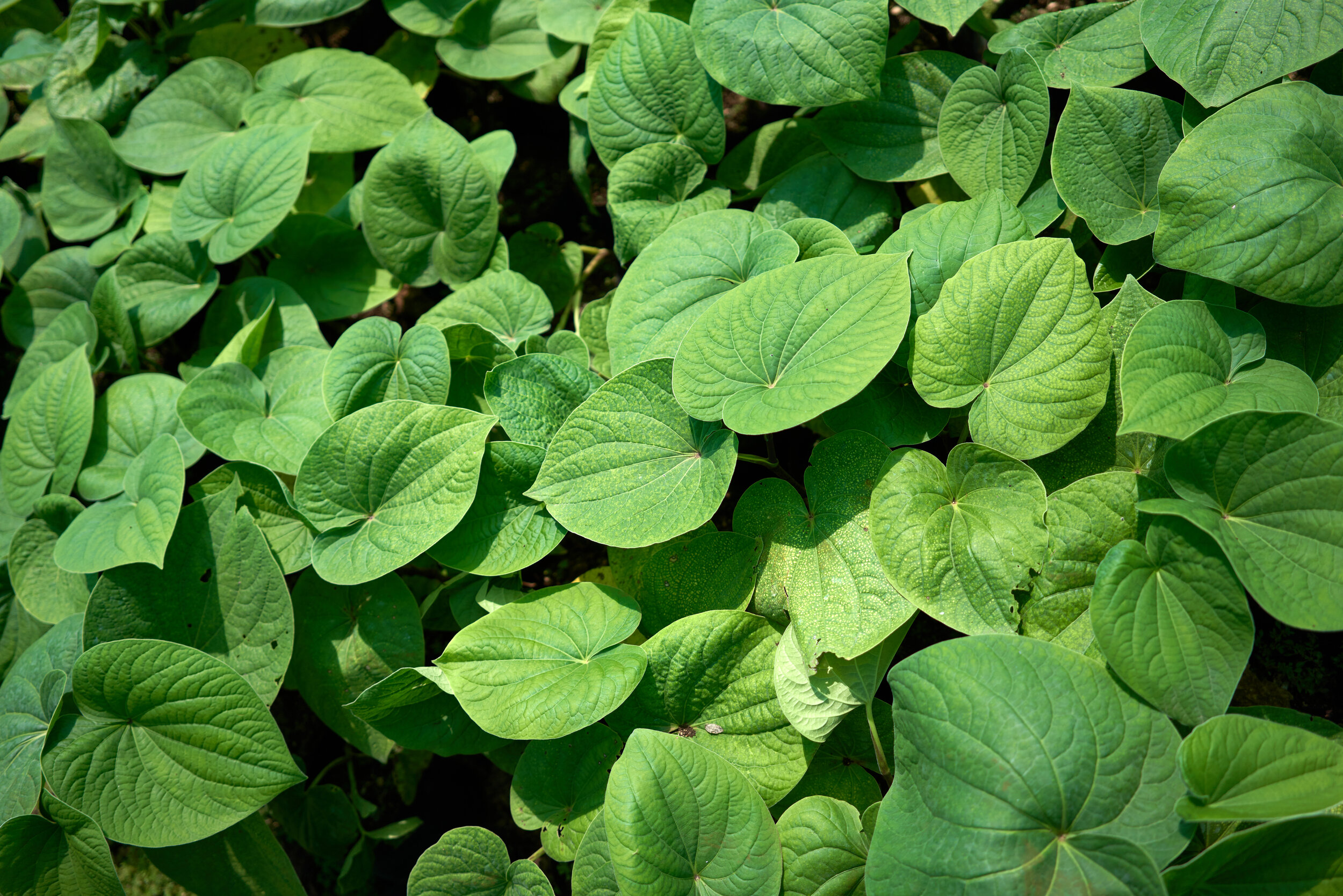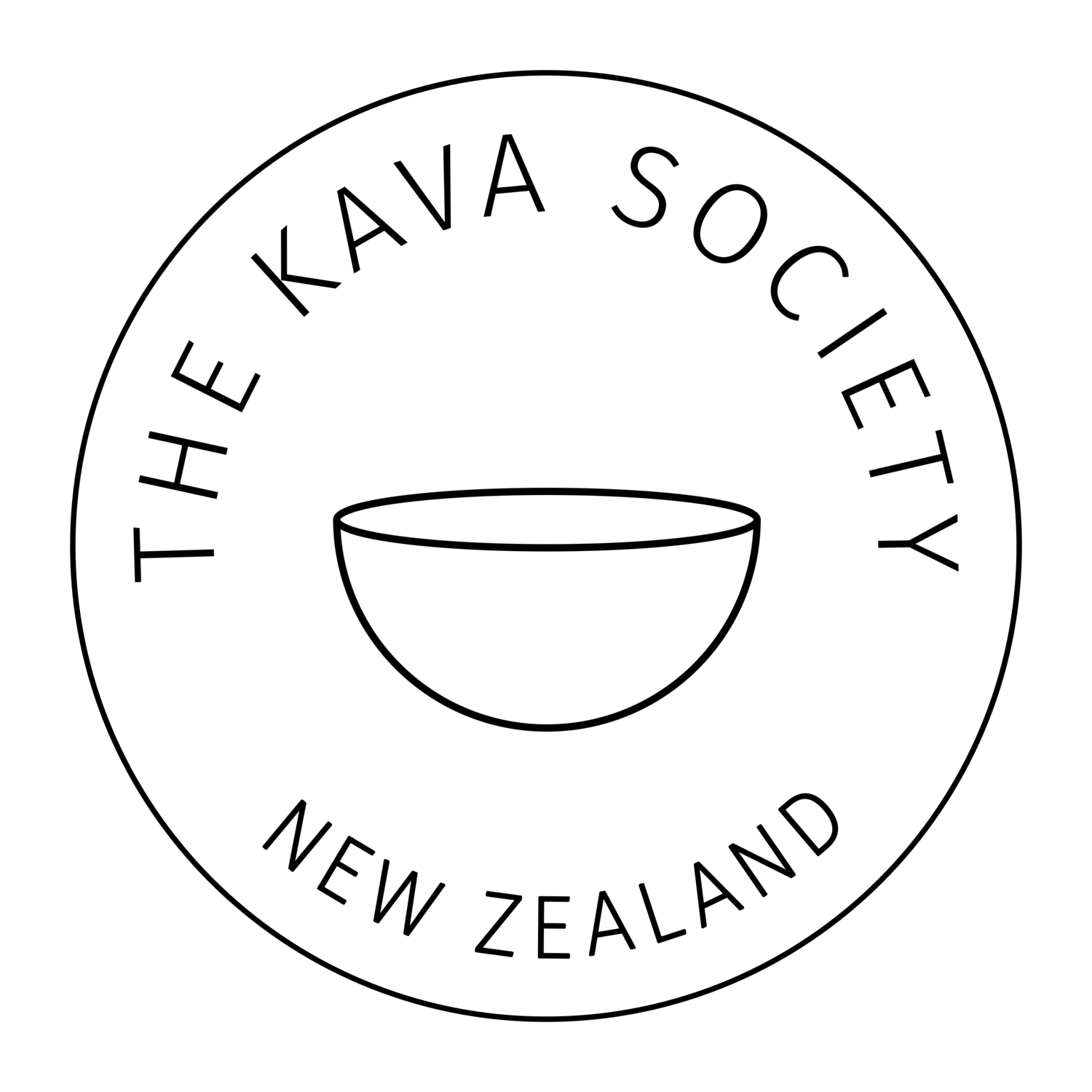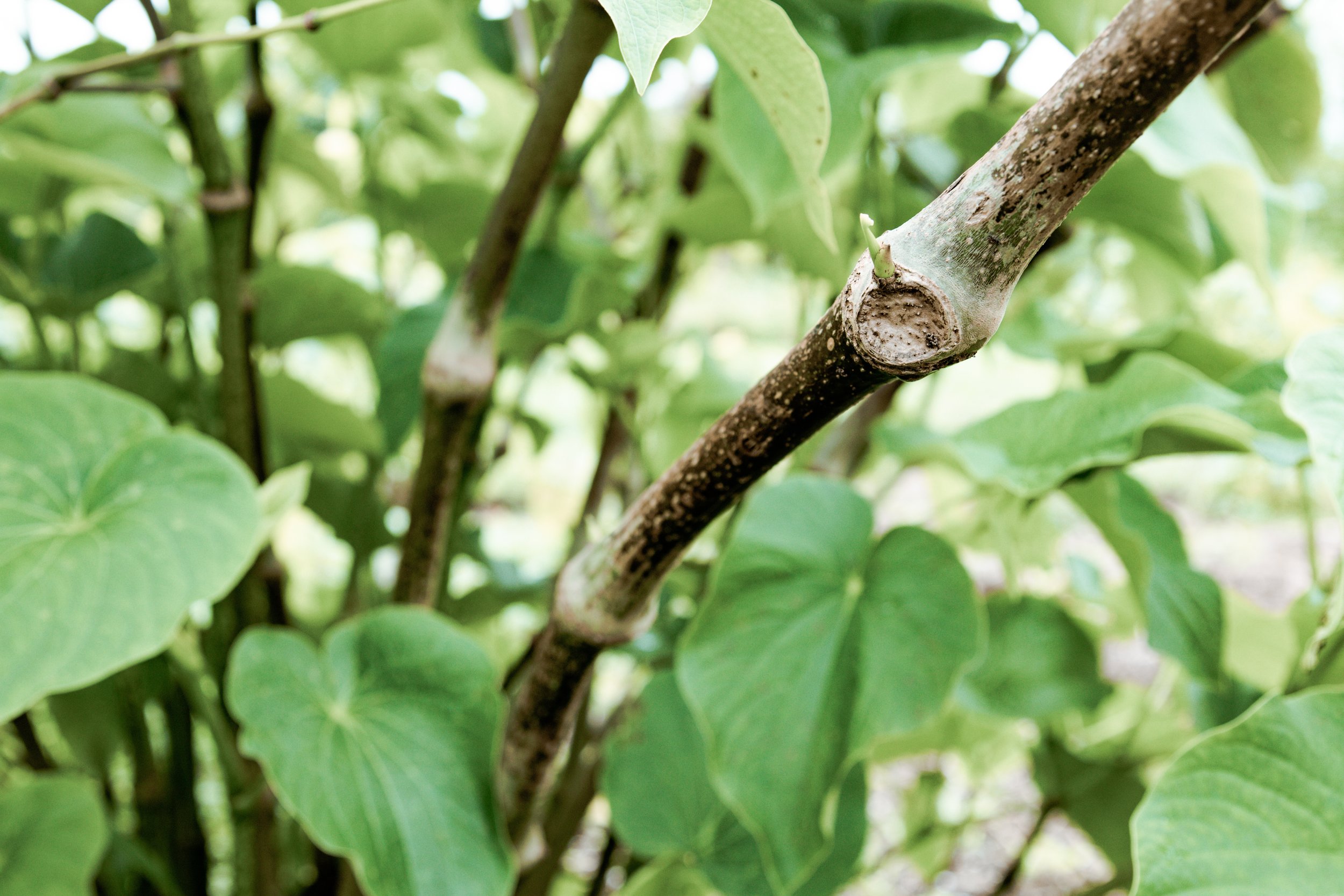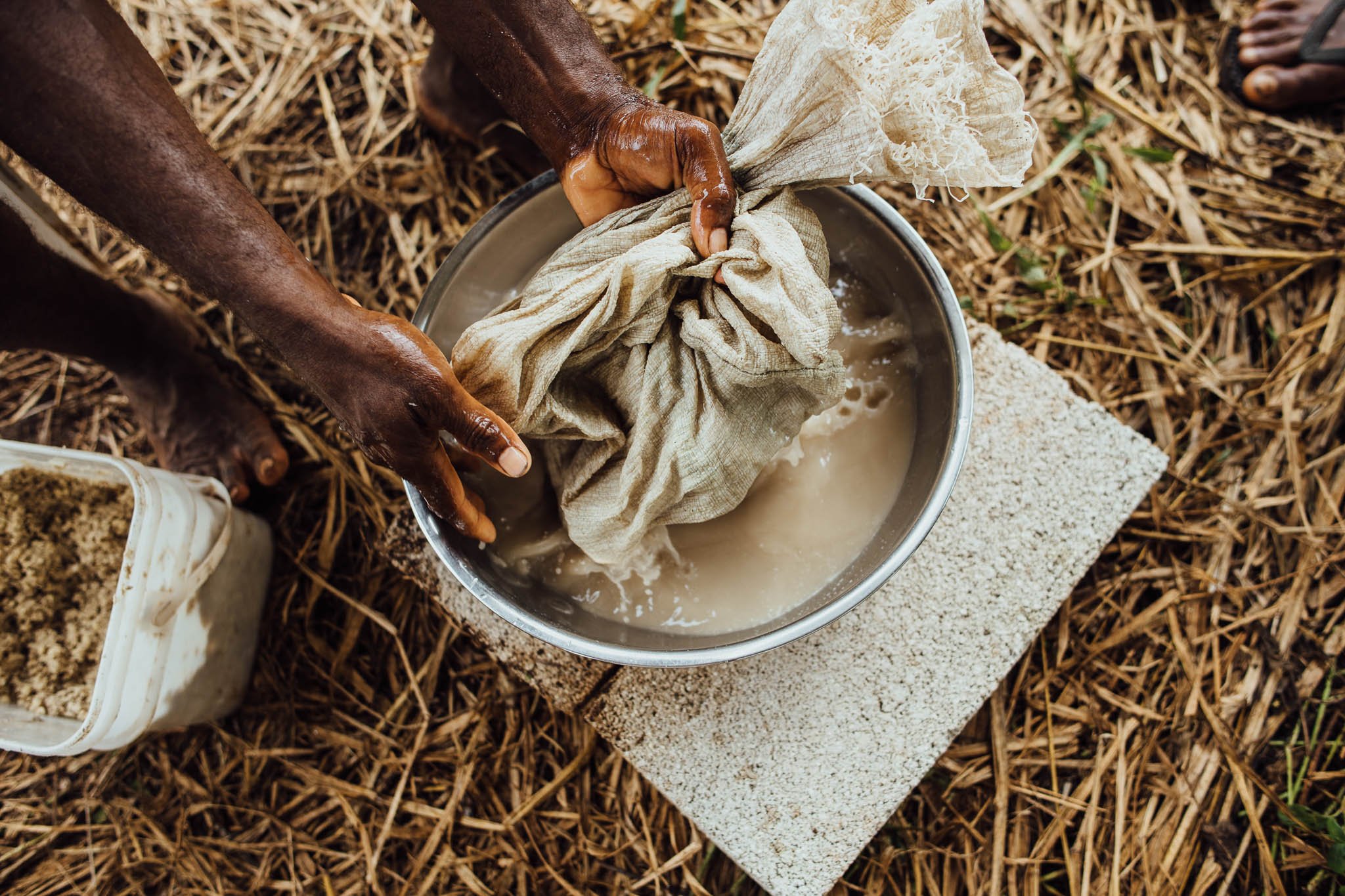
Kava Plant and Drink: Key Facts
Introduction
For most people, the name "kava" refers to both the plant known by botanists as piper methysticum ("intoxicating pepper") and the traditional beverage made from its rootstock. We use this word to refer to both. Here you can learn some essential facts about the plant's characteristics and the key aspects that anyone interested in consuming kava should understand. For more detailed information, check out our Frequently Asked Questions or Contact Us.
Kava Plant
Kava (Piper methysticum) belongs to the pepper family Piperaceae (yes, related to the black pepper in your kitchen!). It represents one of humanity's most interesting achievements in Pacific Island agriculture.
According to research by Dr Vincent Lebot, kava was domesticated in northern Vanuatu from a wild species called Piper wichmannii. Around 3,000 years ago, farmers encountered a unique mutation that produced much more pleasant effects than the wild plant. While this new variety was sterile and harder to grow, requiring human intervention to reproduce through stem cuttings, its superior properties made it worth the extra effort. Over centuries, traditional farmers carefully selected and preserved the most desirable mutations, leading to today's noble kava cultivars. From Vanuatu, these cultivars gradually spread across the Pacific, where they became an integral part of various island cultures.
You can learn more about this historical section process and how it produced better kava over time here, and read about our own favourite range of cultivars here.
Which parts of the kava plant are actually used? When mature, kava grows into an attractive shrub that can reach over three metres in height. Its most valuable parts are underground - the roots and rootstock, which develop into a substantial mass through traditional farming techniques like soil mounding. While the plant's large, heart-shaped leaves are essential for growth, it's the roots that contain the compounds prized by traditional drinkers.
Borogoru kava cultivar stems and leaves
Bir Kar kava cultivar leaves
Kava Beverage and Its Effects
As noted by V. Lebot and J. Lèvesque:
The remarkable medicinal properties and soothing effects of kava have been part of the wisdom of Pacific islanders for centuries. Melanesians, Polynesians and Micronesian people alike grind the fresh or dry roots of this plant to prepare their traditional beverage, which is the centerpiece for much solemn ritual as well as being the daily social drink for many appreciative Oceanians.
The specific effects of kava depend on the cultivar, plant's potency and method of consumption. But generally speaking, kava is known as a relaxing drink with potential to promote a sense of sociability, as well as feelings of peace and harmony without diminishing mental awareness or clarity. For many users, kava is a pleasant, refreshing and mentally uplifting drink that relieves fatigue, relaxes the body after hard work or effort, clears the mind and brings a sense of well-being.
Robert J. Gregory, a Massey University professor of psychology, offered the following description of kava's effects:
Kava makes you quiet and able to think and listen to your thoughts. Your mind opens to what has been and should be done. The subjective feeling after kava is to be slowed down, for it almost forces one to become quiet. Sometimes it is like entering a light relaxed dream. (...) The altered state of consciousness is subtle and mild. Noise, interference with thought processes, bright lights, movement, all hinder the effect, the mildly altered stream of thought. The subtle effect is maintained only if there is peace and quiet.
Even though kava has been an important component of the traditional Pacific Islands medicine (with its potential anti-anxiety, stress relieving properties are under current scientific research), most people consume it today as a traditional, relaxing and refreshing beverage and not a remedy for any health problems. This is also how we see, consume and promote kava. One way to look at kava is to compare it to drinking coffee. Both kava and coffee are used as benign social drinks. While the latter can give a mild buzz and "kick" of energy, the former is known as a gently relaxing tonic.
Freshly harvested roots getting cut in preparation of the drink
Minced roots are agitated in water & strained to prepare the drink
Kava Chemotypes
The main active ingredients in kava responsible for its effects are known as kavalactones, concentrated in the plant's rootstock and roots. Different cultivars naturally display distinct compositions and concentrations of these compounds. For a deep dive into this fascinating topic, check out our detailed [blog post on kava chemotypes].
A kava's chemotype is expressed as a six-digit number that lists the relative amounts of major kavalactones in decreasing order. While this coding system alone cannot perfectly predict effects (as noted by researchers, the full picture involves complex interactions between compounds), it provides valuable guidance about what to expect from different varieties.
For instance, kavas with higher proportions of kavain (identified by number 4 in first or second position) tend to produce more "heady", uplifting effects - ideal for daytime use and social occasions. In contrast, those with higher concentrations of compounds like dihydromethysticin (number 5) typically offer more sedating, "heavy" effects better suited for evening relaxation. You can learn more about these differences in our guide to different types of kava effects.
Freshly harvested kava plant. Stems (on the right) need to be separated from the rootstock (on the left).
The rootstock is further separated into lateral roots (on the left) and stump/chips (on the right)
Kava's Potency
Kavas aren't just different in their chemotype and taste - they can also vary significantly in strength. The most reliable indicator of kava's potency is its kavalactone content, which in properly harvested roots should be between 5% and 15%. Anything below 5% suggests either poor quality or poorly stored kava. This measurement serves as a helpful guide when choosing kava and determining serving sizes.
However, experienced kava drinkers often notice that the subjective potency and quality of their kava experience doesn't always directly correlate with kavalactone percentages. As Dr Vincent Lebot's research shows, this is because fresh kava contains numerous compounds beyond kavalactones - including acidic, volatile and enzymatic elements that are typically lost during standard drying processes. This helps explain why freshly harvested green kava in Vanuatu can feel more potent and offer a richer experience than dried kava with similar kavalactone content.
When we first encountered freshly harvested green kava, we were struck by how dramatically different it was from the dried kava available in New Zealand. While many quality issues with dry kava are obvious - things like poor cleaning, the presence of dirt and plant materials other than roots, or even the addition of fillers like sawdust - we realised the problem goes deeper. Even when producers avoid these dubious practices, a lot of kava's unique properties can be lost through inadequate processing methods. This understanding led us to embark on a research and development journey with our partners in Vanuatu. Our mission became clear: to develop processing techniques that could capture and preserve the authentic properties of fresh kava - its remarkable potency, distinct aroma, and complete spectrum of beneficial compounds - in a shelf-stable form. You can read about our unique approach in this detailed article about our processing standards and learn more about what makes our kava different here.
Whether dealing with fresh or dried kava, several key factors determine its fundamental strength and quality:
Plant age - Kava reaches its peak kavalactone content within 18-36 months of planting. Beyond this age it doesn't get stronger, but good farmers often keep it in the ground longer to increase root mass. Plants harvested too early typically produce weak kava that offers poor value.
Cultivar - Different varieties naturally tend toward different strength levels, though farming practices and processing methods typically have more impact on final potency.
Farmer's expertise - Experienced farmers know exactly how to cultivate and harvest kava for optimal quality. This includes:
Following well-tested traditional farming techniques
Maintaining clean, well-tended gardens free of weeds and pests
Careful separation of different root types during harvest
Proper cleaning and handling of freshly harvested roots
Knowing the optimal harvest time for each cultivar
Understanding and preserving noble cultivar characteristics
Root composition - Lateral roots (the thin roots spreading out from the main rootstock) are the most potent part of the plant. Kava powders with higher proportions of these roots tend to be more expensive but also more potent. Keep in mind though that with extra strength often comes extra flavour - the stump has a much milder taste than lateral roots.
Storage conditions - Kava can lose potency rapidly if not stored properly. For optimal preservation:
Vacuum-sealing is best as it prevents oxidation
If not vacuum-sealed, use air-tight containers
Store in a cool, dry place away from sunlight
Avoid exposure to heat and moisture
Use within reasonable timeframe - even well-stored kava gradually loses potency
Interested to learn more about the complex factors determining kava quality? Read our detailed article about kava purity and quality standards.
Disclaimer: We are not medical professionals. The information provided on this website is not meant to be used to diagnose, treat, cure, or prevent any disease. What we present here is the literature we are familiar with and our own experiences related to the consumption of kava as a traditional beverage. If you do suffer from an illness, take any medications, require treatment, or have any other concerns, we advise that you consult your GP whether you can safely use kava.






